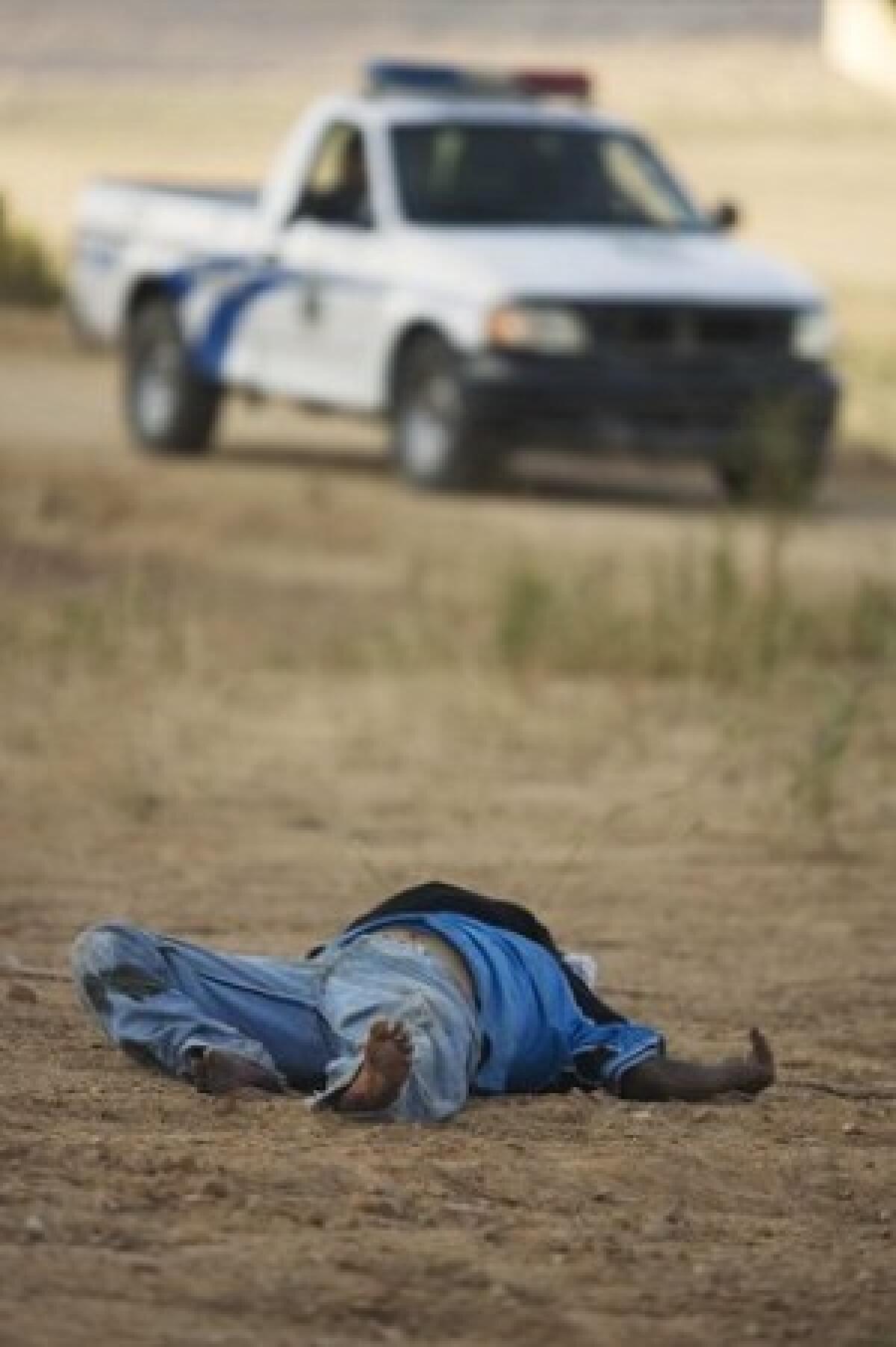Mexico violence is actually down, the numbers show

Reporting from Mexico City — This just in: Mexico may not be as violent as everyone thinks.
Yes, a drug war has killed more than 11,000 people since the end of 2006. Severed heads and heaps of bodies turn up as traffickers battle Mexican forces and one another. Some days, the nationwide toll from drug-related slayings tops 30. (One Mexican newspaper website tallies the carnage on its “Execute-o-meter.”)
Looked at another way, though, Mexico isn’t as deadly as it used to be.
That’s the point the nation’s attorney general, Eduardo Medina Mora, was pushing this week when he cited figures showing that Mexico’s overall homicide rate has fallen since the 1990s.
“The levels of violence that the country is experiencing are very serious,” Medina Mora told a gathering of advertising executives. “But they are much less than we had 15 years ago.”
The drug-related violence has scared away tourists and prompted some commentators to warn that Mexico risks collapse. But Medina Mora said the country registered about 11 homicides per 100,000 residents last year, down from 16 in 1997.
Medina Mora pointed out that the country’s overall homicide rate was lower than that of neighbors such as El Salvador and Guatemala, and even pockets of the United States. He noted, correctly, that Washington, D.C., and Louisiana have more homicides per capita than Mexico.
The prosecutor’s presentation was dismissed by some analysts and activists as so much spin. But his comments reflect the anxieties of a government that has struggled to convince residents that it is winning its 2 1/2 -year-old war against drug gangs and making headway against crime and impunity in general.
Opposition politicians, analysts and many ordinary Mexicans say the soaring number of drug slayings since President Felipe Calderon launched his military-led drug offensive in December 2006 is evidence of failure, despite high-profile arrests and seizures of large quantities of narcotics, cash and guns.
Even a leading member of Calderon’s National Action Party, Sen. Gustavo Madero, took issue with Medina Mora’s glass-half-full assessment. Madero said violence in his home state of Chihuahua, where by some counts the death toll already exceeds 1,000 this year, has never been worse. Most of those killings have been in the border city of Ciudad Juarez.
“Never, not even in the Revolution, were we in as grave a situation as we are today,” Madero said. “If the state of Chihuahua were a country, today we would have the fourth-highest level of major violence in the world.”
Medina Mora is correct in asserting that homicides in Mexico have fallen since the 1990s, when the country was run by the Institutional Revolutionary Party. The drop has been steepest in rural states, such as Oaxaca, Chiapas and Guerrero.
The numbers show a roughly steady decline in homicides nationwide from 2000 to ‘06, then an increase after Calderon launched his drug offensive upon taking office.
Statistical niceties come as cold comfort on Mexico’s streets, where an epidemic of kidnappings and extortion has terrified people and grisly drug-war executions leave many residents wondering what is happening to their country. In a recent poll, two-thirds of respondents said crime was worse than a year ago.
“Mexico today is a more violent country. There is more insecurity. And the conditions of the quality of life for Mexicans are worse than 15 years ago,” said Jose Antonio Ortega, who heads an anti-crime group in Mexico City.
Drug-related violence has been worst where feuding among traffickers is sharpest, such as Chihuahua and the northwestern states of Sinaloa and Baja California. Nine of Mexico’s 31 states account for 80% of the drug killings, according to an analysis by the daily El Universal newspaper.
Much of the spectacular savagery has taken place in cities, where the violence tends to get more publicity.
Medina Mora acknowledged the public-relations hurdles when he asked the advertising group for its help fashioning a credible message of government success. Gangs are using extreme violence to propel their own propaganda war, he said.
“It’s just as effective to kill a person with a Florentine dagger in the liver as with repeated shots from an automatic rifle, like an AK-47, or by decapitation,” he said.
“Doing it that way has intimidation as a goal . . . and that is what we are experiencing.”
More to Read
Sign up for Essential California
The most important California stories and recommendations in your inbox every morning.
You may occasionally receive promotional content from the Los Angeles Times.










